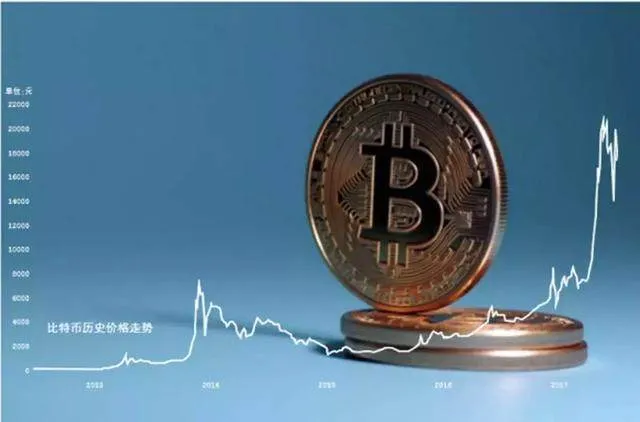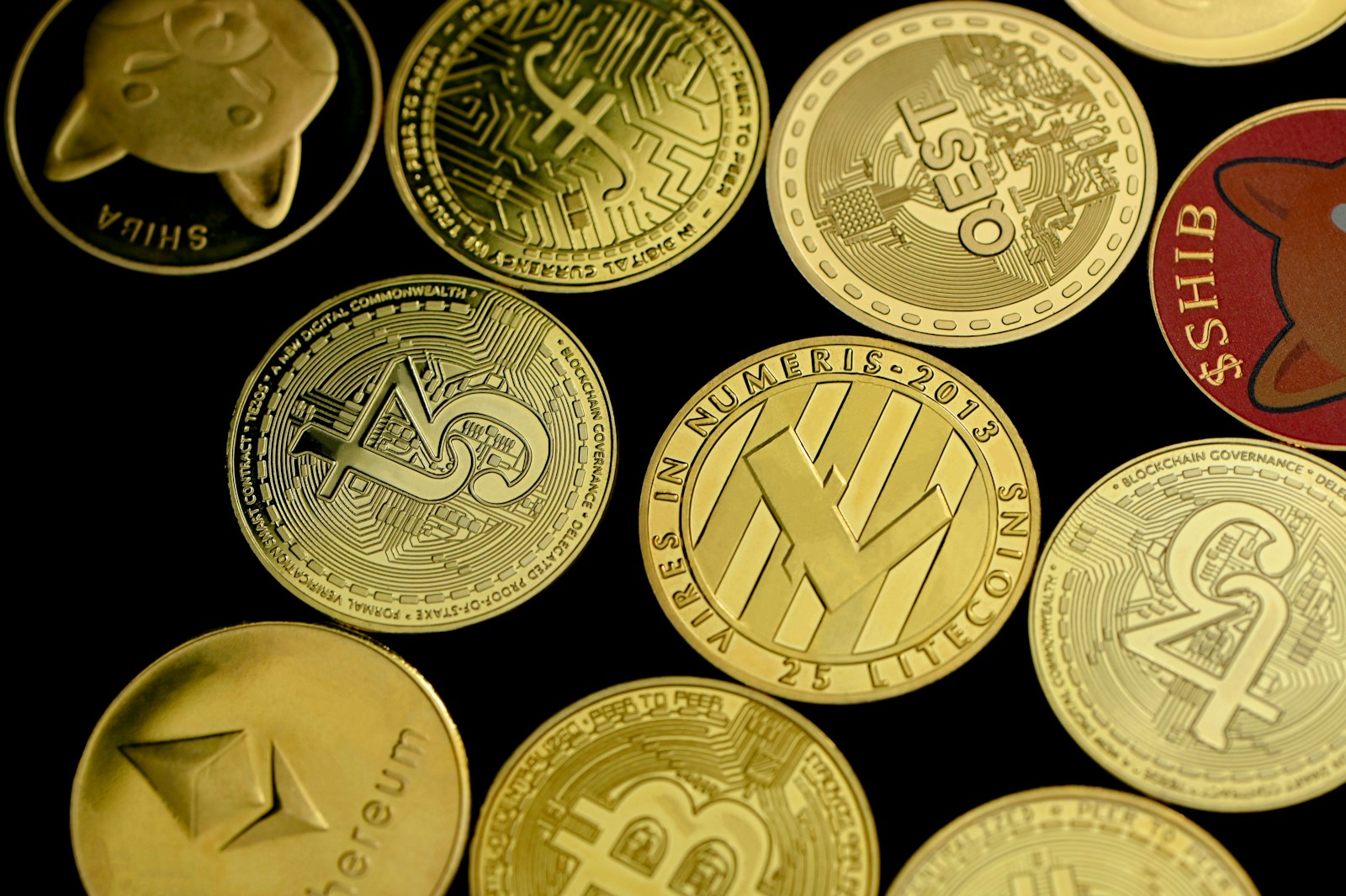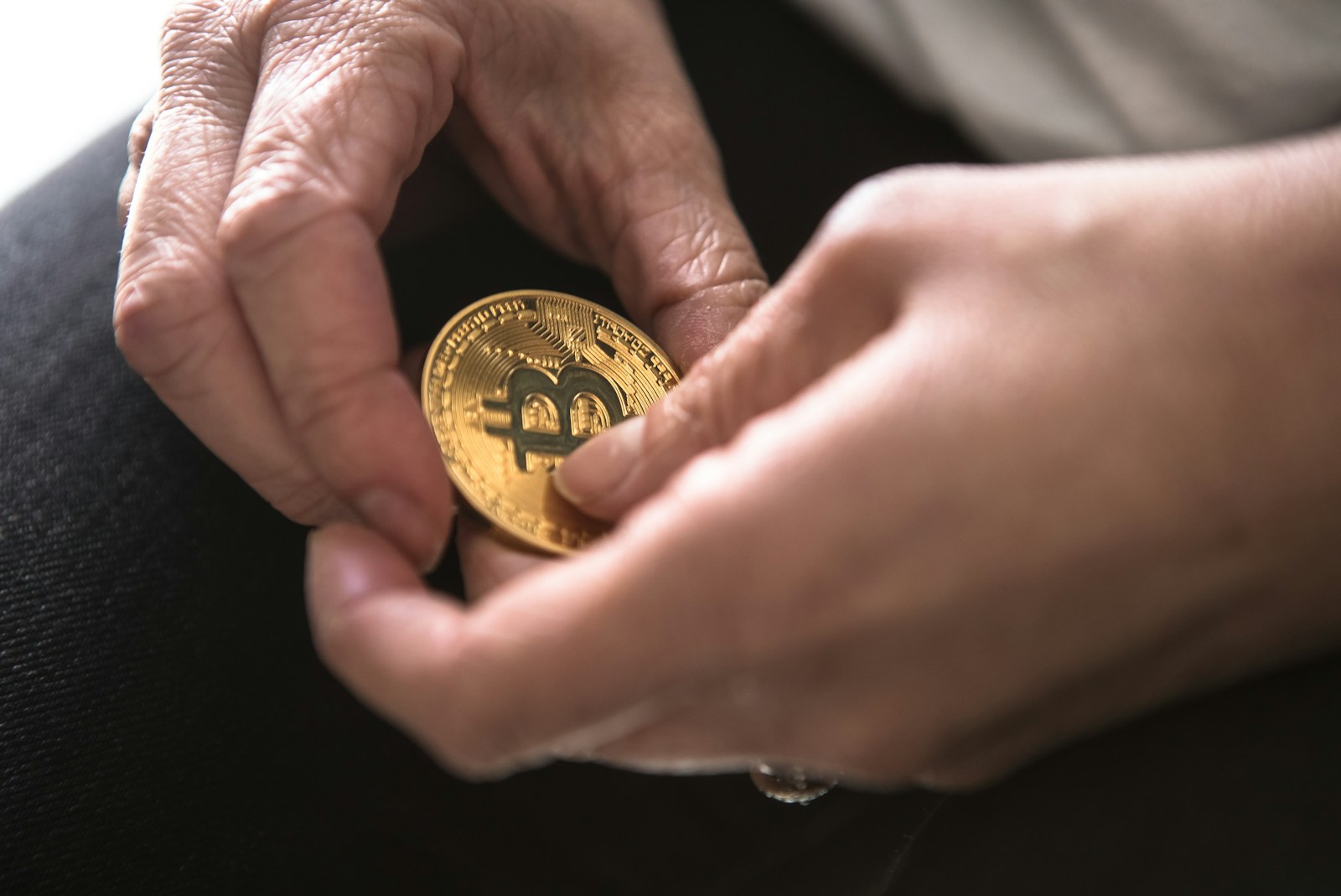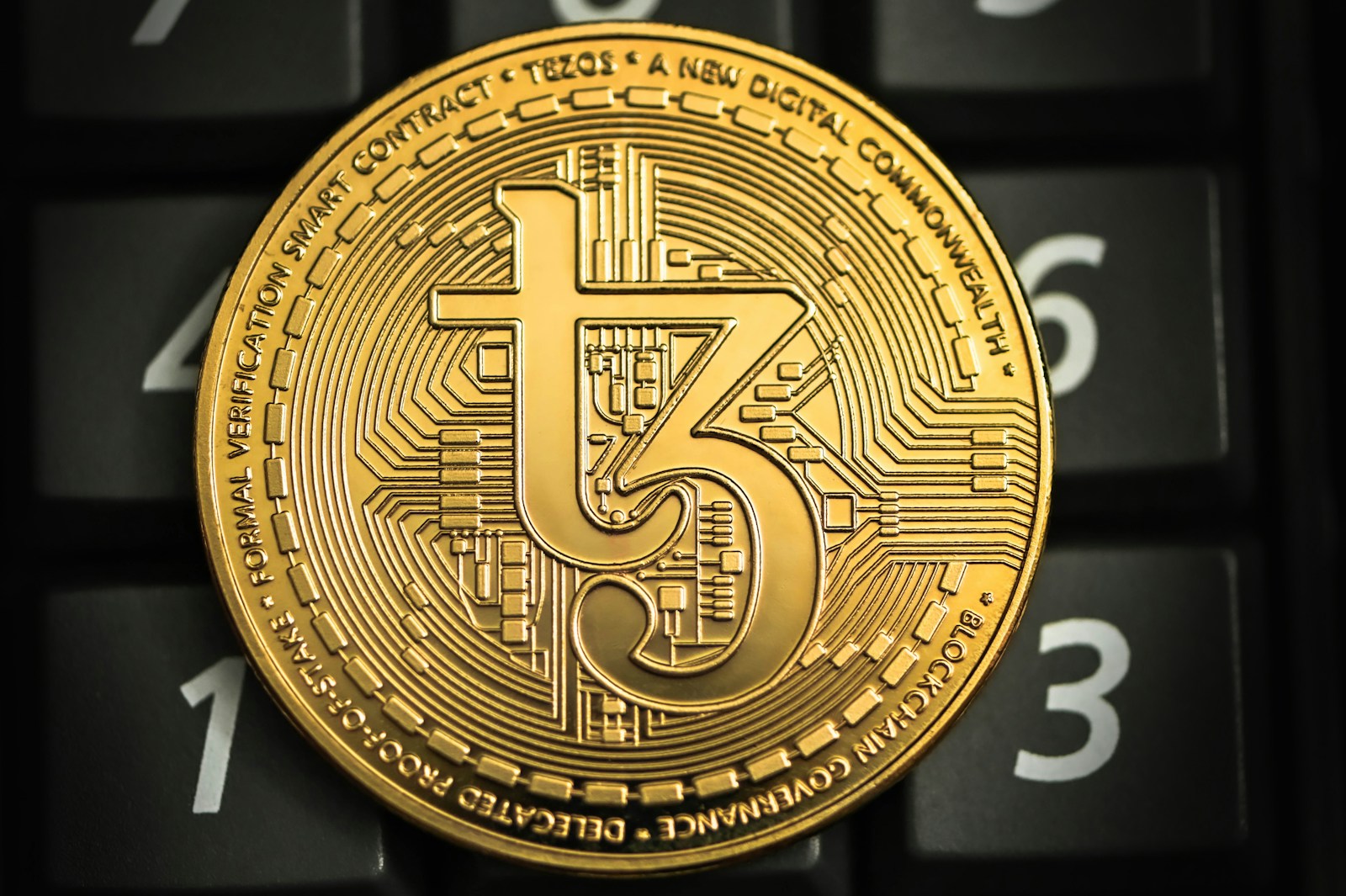
The concepts of OTC (Over-the-Counter) and USDT (Tether) are often mentioned in today's financial markets, but what exactly are they? OTC is a form of trading that takes place outside of a formal exchange, while USDT is a stablecoin whose value is tied to the U.S. dollar. This article will delve into the definition, participants, features, operations, benefits and risks of the OTC market, as well as the definition, background, technological foundation, operations and applications of USDT, and explain how they relate to each other and how to trade USDT OTC.
The OTC market is a flexible and highly private trading environment for large trades and less liquid assets. Its participants include institutional investors, hedge funds and private investors, etc. These market characteristics make OTC trading highly flexible and private. At the same time, USDT, as a stablecoin, provides a stable means of storing value and is widely used in the cryptocurrency market for trading and payments. Understanding the OTC market and how USDT operates and the risks involved can help investors better manage their large-value transactions and risks.
Basic Concepts of OTC
OTC, the full name is Over-The-Counter, which is translated into Chinese as over-the-counter trading. It is a form of trading that takes place outside of a formal exchange. Unlike centralized exchanges, OTC markets do not have centralized trading venues, and traders can trade through brokers, electronic platforms, or directly.
Definition of OTC market
The OTC market is a market where buyers and sellers trade in a decentralized manner. This type of market focuses on assets that are less liquid or more heavily traded on traditional exchanges. otc markets include a wide range of financial products such as equities, bonds, derivatives, and cryptocurrencies.
Participants in the OTC market
Participants in the OTC market include institutional investors, hedge funds, private investors and market makers. These participants usually have high levels of financial strength and expertise and are able to conduct large trades in the OTC market.
Characteristics of the OTC market
The OTC market is characterized by the following key features:
| Features | describe |
|---|---|
| dispersibility | Trading is not centralized on a single exchange, but is spread across brokers and platforms. |
| Flexibility | The trading conditions can be flexibly adjusted according to the needs of both parties. |
| privacy | The identities and details of the parties to a transaction are usually not disclosed, and there is a high degree of privacy protection. |
| Mobility | For large trades or less liquid assets, the OTC market can provide better liquidity. |
In summary, the OTC market is a flexible and private way of trading for investors who need to make large trades or specific assets.

How the OTC market works
The OTC (over-the-counter) market is a different trading environment from the traditional exchange market. In an OTC market, transactions are conducted through direct negotiation between buyers and sellers, rather than through a public exchange. This type of market operation has its own unique characteristics and processes.
Negotiate a deal
In the OTC market, buyers and sellers usually negotiate over the phone, by email or through a specialized platform. This direct communication makes trading more flexible and allows both parties to reach an agreement based on their needs and conditions. This is a significant departure from the standardized process of traditional exchanges.
Pricing mechanism
The pricing mechanism in the OTC market is relatively flexible, with prices determined by negotiation between buyers and sellers based on market conditions and their own needs. In the absence of a standardized quotation system, prices may vary according to different counterparties and trading volumes. This flexible pricing mechanism allows the OTC market to better meet individualized trading needs.
Diversity of counterparties
The OTC market is very diversified in terms of counterparties, including commodities, derivatives and cryptocurrencies, in addition to traditional stocks and bonds. This diversity allows the OTC market to provide more investment options to meet the needs of different investors.
Trading Risks and Countermeasures
As trading in the OTC market is conducted through mutual negotiation, there is a lack of standardized supervision and hence a certain degree of trading risk. These risks include credit risk, liquidity risk and market risk. To minimize these risks, participants usually conduct stringent due diligence and adopt corresponding risk management measures.
Overall, the OTC market offers flexibility and diversity in its operations, but also comes with certain risks. Therefore, it is very important to understand how the OTC market works and the risks involved when participating in OTC market trading.
Benefits and Risks of OTC Trading
Strengths
The OTC (over-the-counter) market offers several advantages that make it the preferred trading method for many investors and institutions.
1. High flexibility
The OTC market allows buyers and sellers to customize the terms of the transaction, such as price, volume and settlement, according to their needs. This flexibility allows OTC trading to adapt to various market conditions and trading needs.
2. Facilitation of large transactions
In the OTC market, investors can make large trades without significantly affecting market prices. This is particularly important for institutional investors and high net worth individuals who often have large amounts of capital to handle.
3. Privacy and confidentiality
OTC trades are usually non-public, which means that the details of the trade are not publicly disclosed. This is an important advantage for investors who wish to keep their transactions private.
4. Diverse counterparties
There are various types of counterparties in the OTC market, including banks, hedge funds, insurance companies and individual investors. This provides more trading opportunities and better liquidity.
5. Better price control
As the OTC market allows both parties to negotiate prices, investors can better control their transaction costs and thus realize more desirable trading results.
Risks
While the OTC market has many advantages, there are also some risks that investors should consider carefully.
1. Credit risk
OTC transactions are usually conducted directly between two parties and therefore carry the risk of non-performance by the counterparty. This credit risk is particularly pronounced in the absence of an intermediary.
2. liquidity risk
Despite the flexibility provided by the OTC market, in some cases it may take longer to find a suitable counterparty, thereby increasing liquidity risk.
3. Low market transparency
As OTC trading is non-public, the market is less transparent, which may lead to information asymmetry and increased trading risk.
4. Regulatory risk
The level of regulation of the OTC market varies from country to country and region to region, which may result in regulatory risk. Investors need to understand and comply with the relevant regulations to avoid legal problems.
5. Operational risk
OTC trading involves a variety of operational processes, such as clearing and settlement, which may be subject to errors or delays, thereby increasing operational risk.
| Strengths | Risks |
|---|---|
| Highly flexible | Credit Risk |
| Convenience of Large Transactions | Liquidity risk |
| Privacy and confidentiality | Low market transparency |
| Diverse counterparties | Regulatory Risk |
| Better price control | Operational Risk |

Definition and Background of USDT
USDT, the full name isTetherIt is a blockchain technology basedStabilized CurrencyStabilized currencies are characterized by their value being tied to a fiat currency. Stabilized currencies are characterized by their value being tied to a fiat currency, and the value of USDT is usually tied to the value ofdollarEquivalent, 1 USDT ≈ 1 USD.
Background on the creation of USDT
USDT was launched by Tether in 2014 to address the problem of value volatility in the cryptocurrency market. At the time, the cryptocurrency market was extremely volatile, making it difficult for investors to find an asset that could enjoy the convenience of cryptocurrency trading while avoiding extreme price fluctuations. usdt was created to fill this need by providing a stable and reliable means of storing value.
Technical Basis of USDT
USDT was originally based on the Bitcoin blockchain.Omni LayerThe USDT is issued under the Tether Protocol, but as market demand has grown, Tether has also issued USDT on a number of blockchain platforms, including Ethereum, Wavefield (TRON), etc. USDT on these various blockchains is technically different, but its value and use is consistent.
USDT's Operating Mechanism
USDT is issued and repurchased by Tether. When a user wants to buy USDT, he/she can deposit the equivalent amount of USD with Tether, and Tether will issue USDT on a 1:1 basis; conversely, when a user wants to convert USDT back to USD, he/she can apply to Tether, and Tether will destroy the corresponding amount of USDT and return the USD to him/her.
Application Scenarios for USDT
USDT is widely used in the cryptocurrency market for trading, payments, and storage of value. Due to its stable value, USDT has become the asset of choice for many exchanges and investors to hedge market risk and improve trading efficiency. In addition, USDT is used for cross-border payments and fund transfers due to its blockchain-based technology, which allows for fast and low-cost transactions.
USDT's Role in the Cryptocurrency Markets
USDT, known as Tether, is a stablecoin issued by Tether Inc. The purpose of a stablecoin is to peg the value of a cryptocurrency to a fiat currency, such as the U.S. dollar, in order to minimize price fluctuations. usdt's value is typically pegged to the U.S. dollar on a 1:1 basis, and as such, it is widely used in the cryptocurrency market for trading and storing value.
Features of Stabilized Currency
Stabilized coins, such as USDT, have the following features:
| Features | describe |
|---|---|
| Stable value | Linked to fiat currencies such as the U.S. dollar to reduce price volatility |
| High mobility | Widely accepted and traded on major cryptocurrency exchanges |
| transparency | The issuer publishes regular reports on its reserve assets to ensure that the stable currency is backed by value |
trading medium
USDT as atrading mediumUSDT plays an important role in the cryptocurrency market. Due to its stable value, investors can use USDT as an intermediary currency when trading between different cryptocurrencies, thus avoiding losses due to market volatility.
Storage of Value
USDT is also used asStorage of ValueThis is a tool for investors to convert their assets to USDT when the market is volatile. When the market is volatile, investors can convert their assets to USDT to protect the value of their assets from sharp market fluctuations.
Cross-border payments
USDT also has a significant advantage in cross-border payments. Because it is based on blockchain technology, transactions are fast and low-cost, which makes USDT ideal for international fund transfers.
DeFi applications
In the field of decentralized finance (DeFi), USDT is widely used in a variety of financial products and services, such as lending, liquidity mining and synthetic asset trading. Its stable value makes it an important asset in the DeFi ecosystem.
<lang=”zh-Hant”>
OTC Markets in relation to USDT
OTC Markets in relation to USDT
In the cryptocurrency market.OTC Markets(Over-the-Counter Market (OCM) is a type of decentralized trading that is often used for large trades.USDT(As a stablecoin, Tether is commonly traded on the OTC market, which is closely linked to USDT in the following ways.
Liquidity in the OTC market
Liquidity in the OTC market is crucial for large trades. Since USDT is pegged to the US dollar, its price is relatively stable, which makes USDT an ideal trading medium in the OTC market. Traders can use USDT to transfer large amounts of money without having to worry about the risks associated with price fluctuations.
Transaction speed and efficiency
In the OTC market, transaction speed and efficiency are key factors. As USDT is a digital currency based on blockchain technology, transactions can be completed in minutes, which greatly increases the efficiency of transactions. In contrast, cross-border remittances in traditional financial systems can take days to complete.
Anonymity and Privacy
One of the key features of the OTC market is the anonymity and privacy of transactions. When trading with USDT, both parties do not have to disclose their identifying information, which is extremely attractive to some investors who want to keep a low profile. This has made USDT popular in the OTC market.
Stability and Risk Management
As USDT is pegged 1:1 to the US dollar, its price stability makes it a risk management tool in the OTC market. Investors can convert their funds to USDT to avoid the risks associated with market volatility. This stability makes USDT play an important role in the OTC market.
Global acceptance
USDT is widely accepted globally, which makes it a convenient trading tool in the OTC market. Whether in Asia, Europe or the Americas, investors can easily trade with USDT, which further contributes to the prosperity of the OTC market.
How to Trade USDT on OTC Markets
Choosing the right OTC platform
in progressOTC tradingBefore that, you first need to choose a reliableOTC platformThe OTC platforms are available in the market. There are many OTC platforms in the market, such as FireCoin OTC, OKEx OTC and Binance P2P. When choosing a platform, you should consider factors such as its trading volume, security, user ratings and fees.
Registration and Verification
After selecting a platform, you will need to register and complete identity verification (KYC). This process usually involves providing identification documents and taking a selfie. This is to ensure the legitimacy and security of transactions.
Choosing a Counterparty
After completing the verification, you can browse the available counterparties on the platform. Typically, the platform displays each seller's or buyer's rating, the number of completed transactions, and their offer price. Choose a counterparty with a high rating and a reasonable quote to trade with.
Trading
After selecting your trading counterparty, enter the trading screen and enter the amount you wish to trade.USDTQuantity and Price. After confirming the transaction, the platform will temporarily lock the seller's USDT until the buyer completes the payment and confirms receipt of the funds.
terms of payment
When trading USDT on the OTC market, common payment methods include bank transfer, Alipay, Wechat Pay, etc. The specific payment method depends on the negotiation and platform support of both parties. The specific payment method depends on the negotiation between both parties and the support of the platform. After completing the payment, you need to mark the payment as completed on the platform and wait for the seller's confirmation.
Confirmation of receipt and release
After the seller confirms receipt of the payment, the USDT will be released on the platform and transferred to the buyer's account on the platform. The entire transaction is usually completed within a few minutes, but the exact time may vary depending on the payment method and the speed of the counterparty's response.
Completion and Evaluation
After the transaction is completed, both parties can rate the transaction on the platform. This helps other users to understand the reputation of the counterparty and make better choices in future transactions.
| Steps | describe |
|---|---|
| 1. Choice of platform | Choose a reliable OTC platform, such as Flamingo OTC, OKEx OTC, etc. |
| 2. registration and certification | Complete platform registration and identity verification |
| 3. Selection of counterparties | Browse and select highly rated and reasonably priced counterparties. |
| 4. Transactions in progress | Enter the quantity and price of the transaction and confirm the transaction. |
| 5. Payment modalities | Select and complete the payment, e.g. bank transfer, Alipay, etc. |
| 6. acknowledgement of receipt and release | The seller confirms receipt of the payment and releases the USDT. |
| 7. Transaction Completion and Evaluation | Post-completion evaluation |
Notes on OTC trading with USDT
Understanding Trading Objects
When trading on the OTC market, it is important to know your counterparty. Since OTC trading usually involves a large amount of capital, choosing a reputable counterparty can reduce the risk. It is recommended to use a platform or intermediary with a good reputation and track record.
Ensure transaction security
In OTC trading, security is a primary consideration. Always use secure communication channels to negotiate transactions and ensure that security measures such as double-checking are utilized in the transaction process. In addition, you should choose a trusted payment method to prevent theft of funds.
Confirmation of exchange rate and handling fee
Before trading OTC in USDT, you should double check the exchange rate and the associated handling fees. The exchange rate for OTC trading may differ from the market rate, and understanding these differences will help you make a more informed trading decision. It is also important to understand the fees charged by the trading platform or intermediary to avoid unnecessary costs.
Compliance with laws and regulations
Different regions have different laws and regulations regarding cryptocurrency and OTC trading. When trading OTC USDT, it is important to understand and comply with local laws and regulations to avoid legal risks. This includes understanding local tax requirements and anti-money laundering regulations for cryptocurrency trading.
Maintaining a trading record
Whether you are buying or selling USDT, it is essential to keep a detailed transaction history. This not only helps track the history of transactions, but also provides evidence if necessary. It is recommended that you record the time, amount, counterparty, and associated communications.
Cautious handling of large transactions
The OTC market usually involves large transactions and therefore requires special care. It is recommended that large transactions be spread out over a period of time to minimize risk. It is also wise to consult with a professional financial advisor or lawyer.
Understanding Market Dynamics
The cryptocurrency market is changing rapidly and understanding the market dynamics is crucial to successful OTC trading. It is recommended to follow market news and analytical reports on a regular basis in order to trade at the best possible time.
In conclusion, the use ofUSDTproceedOTCTrading requires thorough preparation and a cautious attitude. By knowing your counterparties, ensuring that your transactions are secure, recognizing exchange rates and fees, complying with laws and regulations, keeping records of your transactions, handling large trades with care, and understanding market dynamics, you can effectively minimize your risks and achieve successful trading.
<lang=”zh-Hant”>
Frequently Asked Questions
Frequently Asked Questions
What is OTC?
OTC(Over-The-Counter (OTC) is a form of trading that takes place outside of a formal exchange. Parties can trade through brokers, electronic platforms, or directly, without the need for a centralized trading floor.
Who are the key players in the OTC market?
The main participants in the OTC market include institutional investors, hedge funds, private investors and market makers. They usually have high levels of capital strength and expertise and are able to make large trades in the OTC market.
What are the characteristics of the OTC market?
The OTC market is characterized by decentralization, flexibility, privacy and mobility. The terms of the transaction can be flexibly adjusted according to the needs of both parties, and the identities of both parties and the details of the transaction are usually not disclosed.
What is USDT?
USDT(Tether) is a blockchain technology-based stablecoin whose value is usually equivalent to the U.S. dollar, with 1 USDT ≈ 1 U.S. dollar.USDT is issued by Tether, Inc. and is intended to provide a stable and reliable means of storing value.
What are the main applications of USDT?
USDT is widely used in the cryptocurrency market for trading, payments, and storage of value. Due to its stable value, USDT has become the asset of choice for many exchanges and investors to hedge market risk and improve trading efficiency. In addition, USDT is used for cross-border payments and fund transfers.
How to trade USDT on OTC market?
The steps involved in trading USDT on the OTC market include selecting a suitable OTC platform, registration and verification, selecting a counterparty, executing the trade, completing the payment, confirming receipt and release, and completing and evaluating the trade.
What should I be aware of when trading USDT on the OTC market?
Trading USDT on the OTC market involves understanding the counterparty, ensuring the security of the transaction, confirming the exchange rate and handling fees, complying with laws and regulations, keeping records of transactions, handling large transactions with care, and understanding market dynamics.
How is the OTC market related to USDT?
There is a strong connection between the OTC market and USDT, a stablecoin that is often used to transfer large sums of money in the OTC market, offering advantages such as high liquidity, fast trading speeds, anonymity and price stability.
Disclaimer: The contents of this article are for informational purposes only and should not be construed as any form of promotion, investment advice, or invitation, solicitation or recommendation of any investment product.
The contents of this article have been reprinted.offensiveIf there is anything wrong, please contact us and we will remove it immediately, thank you.
Readers should make their own assessment and seek professional advice.





